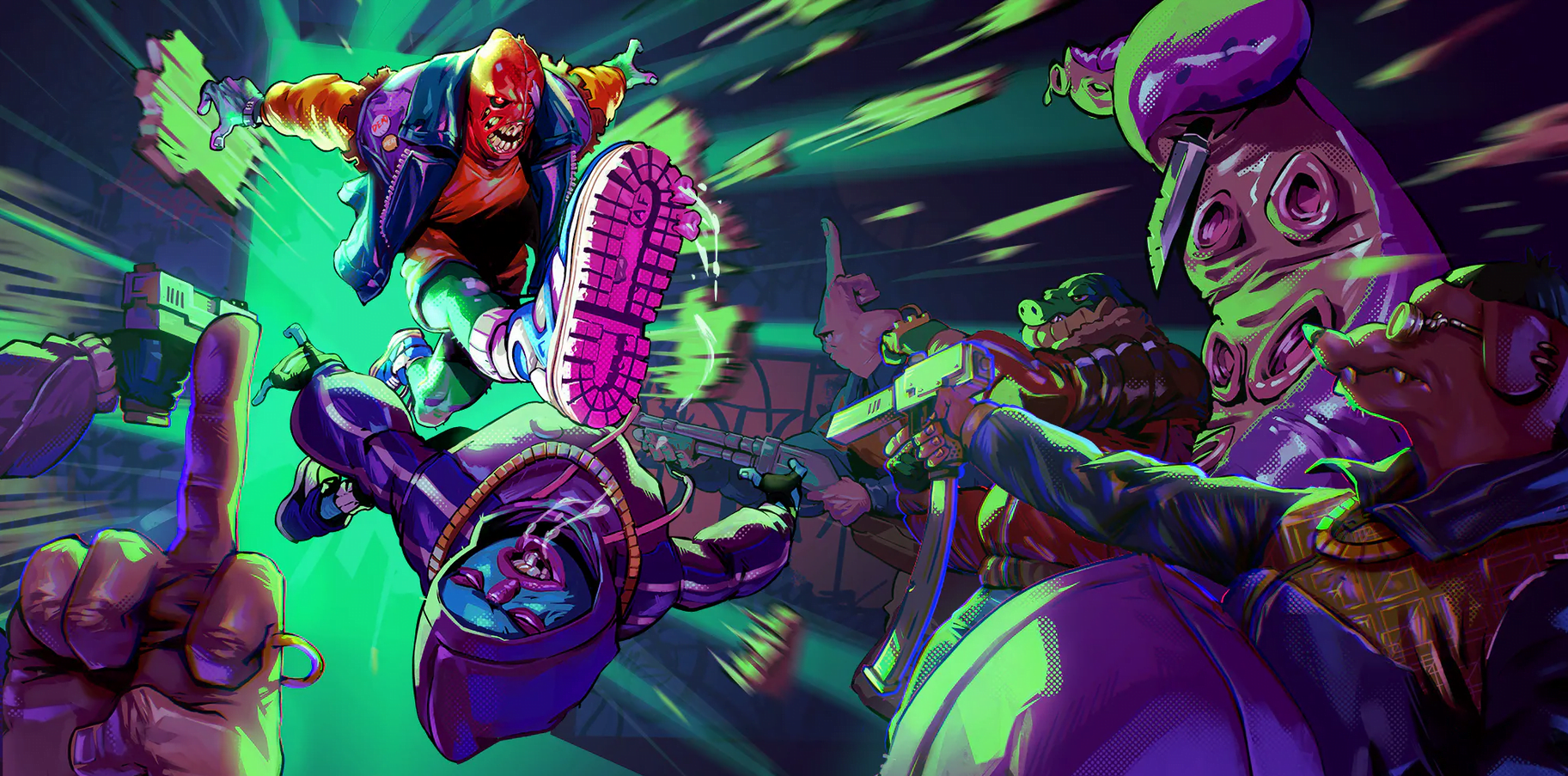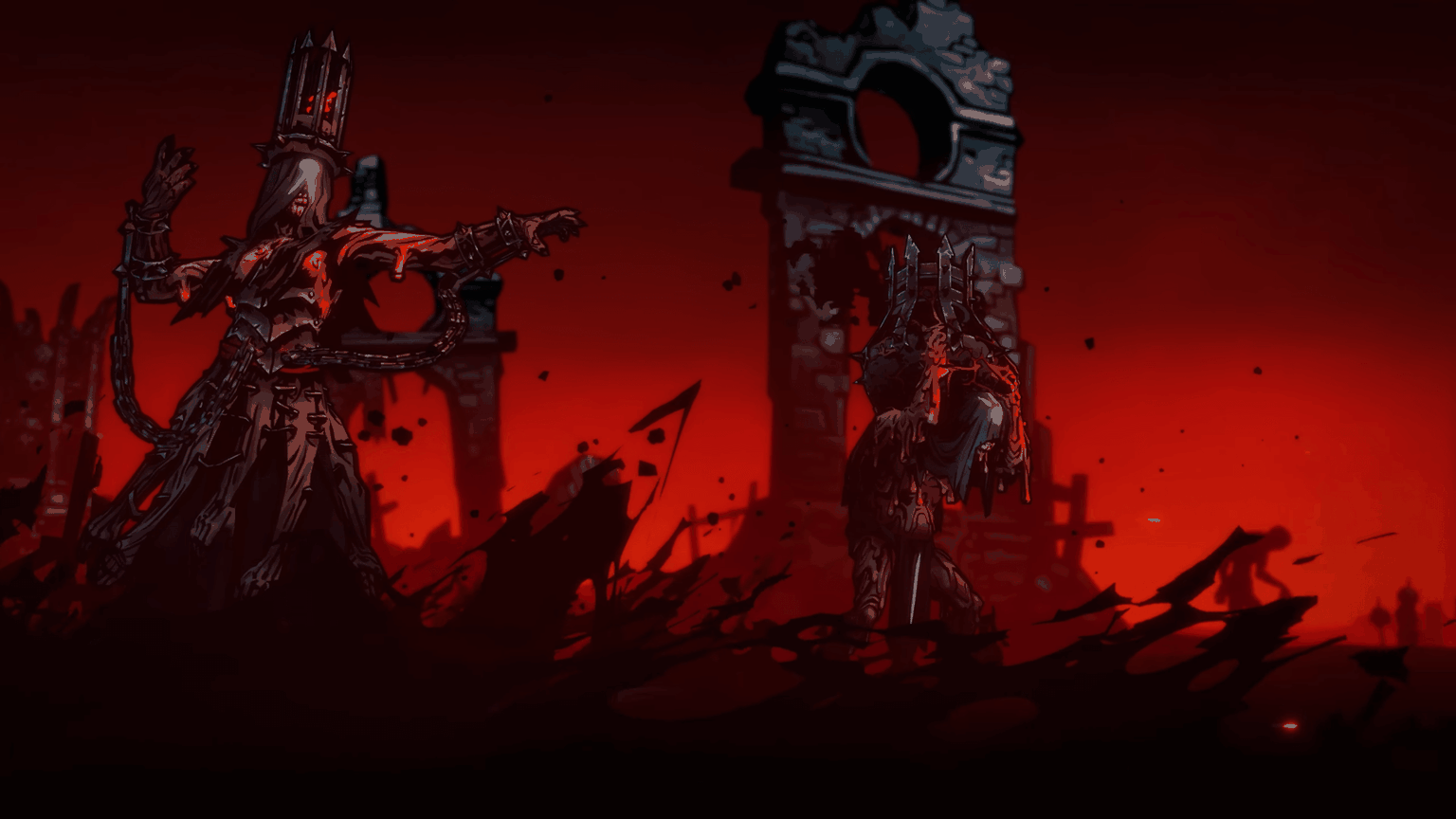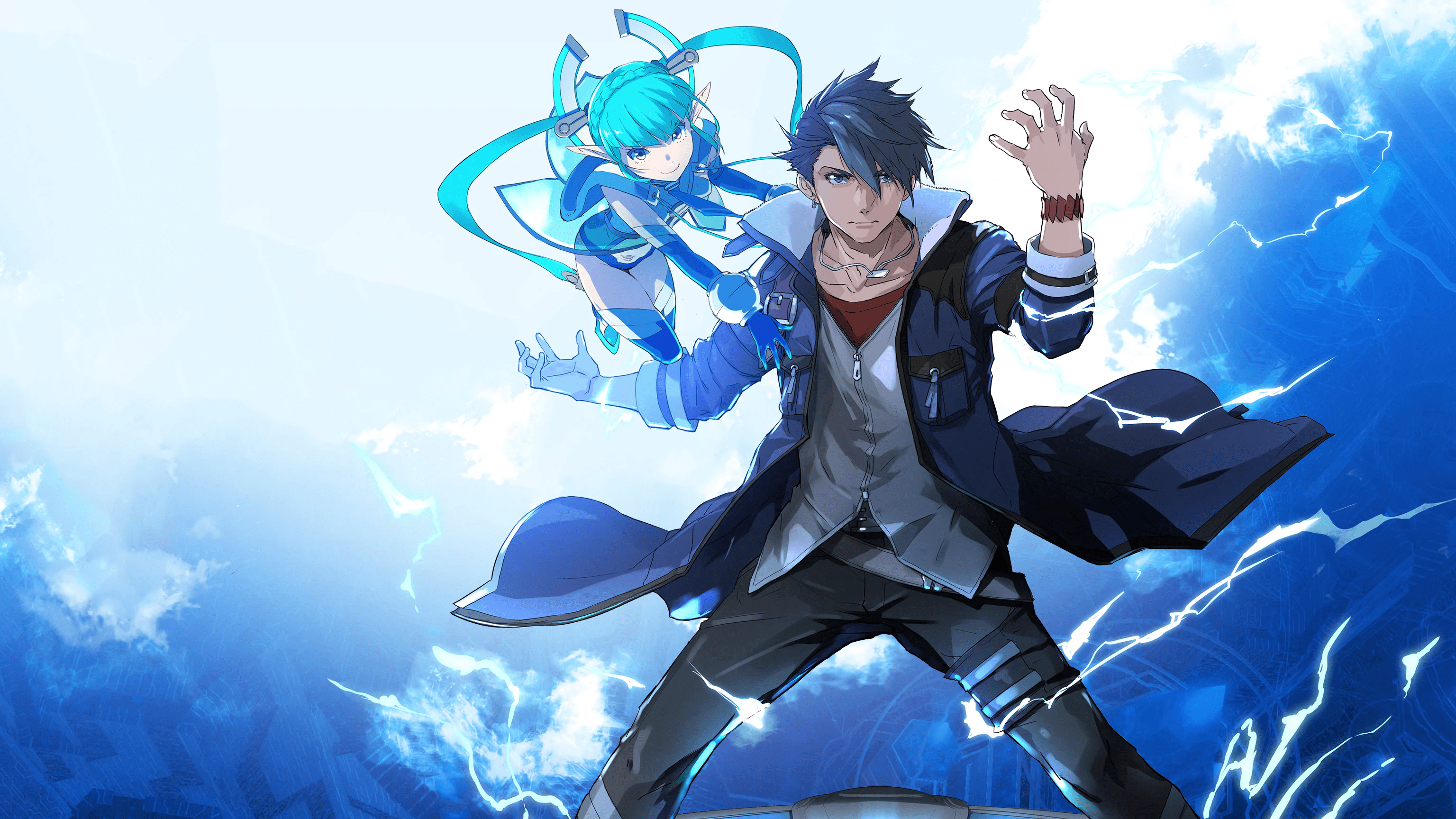Battle Chasers: Nightwar describes itself as an “RPG inspired by classic console greats.” That’s an apt description, as Battle Chasers is definitely a throwback in many ways — for good and bad. But it doesn’t just take and reproduce old concepts wholesale: it tweaks and modernizes them in ways that make Battle Chasers feel fresh and exciting.
Based on the comic book series of the same name by Joe Madureira (of Darksiders fame), Battle Chasers: Nightwar is a role-playing game from developer Airship Syndicate. The game follows a motley band of adventurers on their search for a man called Aramus. It picks up well in the midst of their journey, the crew’s airship being shot down by bandits as they approach a strange island. Along the way, they learn a necromancer is attempting to revive some ancient demon that’s been locked away on the island, prompting them to stop it. It’s pretty standard fantasy fare, all told.
Though the story itself is serviceable, the characters and their interactions are where the writing shines. Even having not read the comics, it was easy to get a sense for who the characters are and their history together. Battle Chasers is careful to avoid long exposition dumps to get people up to speed with who everyone is. Apart from the brief synopsis at the start of the game, Battle Chasers relies a lot on the implied history of the cast to help convey who everyone is and how they ended up together. The conversations that occur when staying at the inn are particularly noteworthy in that regard. It’s to the game’s credit that none of this feels like it’s expressly made to bring players unfamiliar with the source material up to speed. Any details about the world or its characters feel like a natural consequence of the story.
Most of the world is fleshed out through notes you find inside dungeons. Each one serves as a small part of a short story. Some of them serve as additional background on the main plot, but the majority serve as self-contained stories rather than general lore, which makes them worth seeking out. I found that I had to replay dungeons multiple times to find all the entries in any given story, but given the procedurally generated nature of dungeons, it just acts as another incentive to revisit them.

Dungeons are where the majority of your time is spent. Where most of the other indoor areas of Battle Chasers are small and focused, dungeons are long and intricate. Apart from the hordes of monsters roaming their halls, each one sees you doing everything from solving puzzles, avoiding traps, fishing, and completing events specific to that dungeon. In one instance you might find notes for an incomplete potion formula you can try to complete, while in another you may find a couple of ghosts looking to settle a dispute by desecrating one of their graves. The touches of variety help make the process of exploring dungeons more engaging than if it were simply a matter of clearing out rooms until you reach the end.
That said, combat is one of Battle Chasers‘ strongest assets. Though it uses a standard turn-based system, it feels just as fast and exciting as its real-time peers. That’s in large part due to the aesthetic and animation, which breathes tons of life into every battle, making them as much fun to watch as they are to partake in, but mostly it’s the way its many systems play off one another that make it interesting.
Of note are two gauges: overcharge and burst. Overcharge builds an additional pool of mana on top of however much your characters already have. This allows them to use skills for essentially no cost, as the majority of skills can be activated only with overcharge. This solves a couple common problems: one, of running out mana too quickly because you needed to rely on certain skills to succeed in battle; and two, of avoiding the reluctance to use your skills at all. I often fall into the latter camp, always hoarding items and mana until I absolutely need to use them because I worry being too fast and loose will come back to haunt me. With Battle Chasers, that’s never an issue. If anything, not using skills feels like a waste. Overcharge only lasts until the end of the fight, so, with the exception of saving it up for a particular skill, there’s no reason not to use it every chance you get.
Burst is a shared meter that builds slowly over the course of battle. With it, your party is able to unleash special attacks that either deal tons of damage, buff your party, or both. They’re sort of like limit breaks from Final Fantasy; powerful skills that help you out of a tight spot or simply make quick work of lesser foes.

Additionally, skills and status ailments can be combined to deal extra damage. If a target has bleed, for instance, you can combine that with a skill that amplifies the damage or also heals the user. Almost every character has some kind of basic attack that also inflicts some kind of debuff. Calibretto, a sort of mechanical golem, can sunder foes every time he hits them, which in turn makes the target more vulnerable to physical attacks. Knolan, the team’s mage, can do the same with magic damage, or ignite or freeze foes to either deal damage to them every turn or slow them down a bit. Garrison, a swordsman, can cause bleed, and Monika, a thief/assassin, can inflict just about any ailment at random. They can also stack by inflicting any of those status’ multiple times.
The idea, then, is to make the most of these ailments to gain the upper hand. Just using basic attacks is never enough. You could get by with them if you tried, sure, but things would be much harder in the long run. Using skills in conjunction with status afflictions is where the battle system shines. Most of the cast can easily play off one another, setting up strikes that can decimate even the most powerful foes in an instant. There’s dozens of strategies to employ, and the process of discovering them is satisfying. It helps keep combat interesting throughout.
Unfortunately, the game becomes a grind if you decide to keep everyone leveled equally. In a disappointing move, Battle Chasers doesn’t award experience points to non-active party members. The three people you have in your party are the only ones to ever receive XP, which means you need to rerun dungeons frequently to keep everyone leveled. Battle Chasers may be intentionally emulating older JRPGs, but basic quality of life stuff like this is an unfortunate omission.
Thankfully the dungeons do keep things fresh by changing their layout each time you make a run through them, presenting different rewards and events depending on what difficulty you decide to tackle it on. The same rooms start to repeat pretty quickly, though, so it’s hardly a strong solution. Particularly since the grind is still monotonous despite how fun the combat and dungeon exploration is.
The game ends with a pretty clear set-up for a sequel, and I hope Airship Syndicate makes good on it. Battle Chasers lends itself well to the videogame form, and the foundation is strong enough that it’s easy to see how they could expand and refine it over time. Most importantly, though, I like the world and characters enough to want to see more of them.




